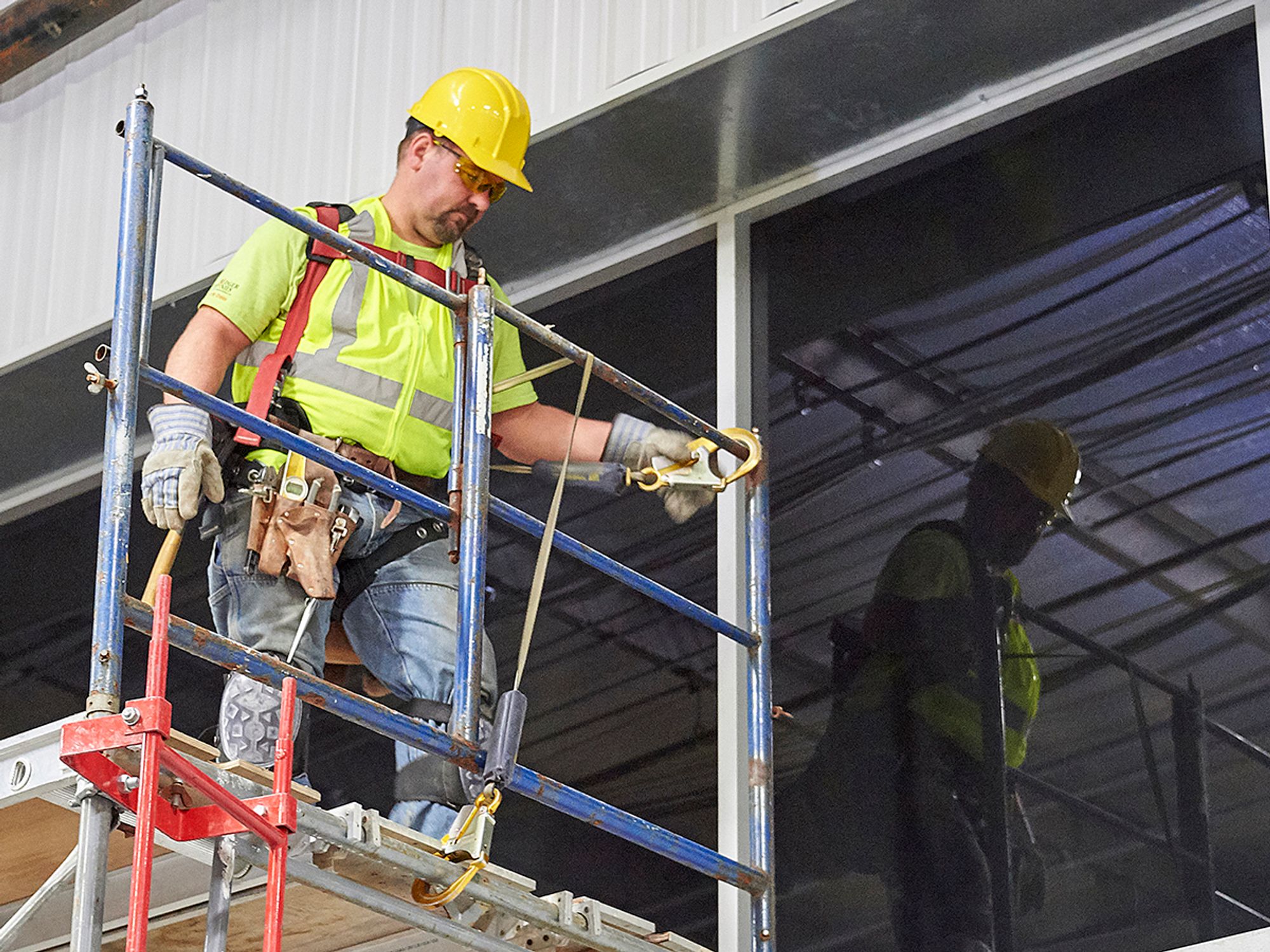Implement performance-oriented fall protection in Construction

- Employers must provide fall protection for workers working at 6 feet or more above a lower level (or 10 feet if working on a scaffold).
- Employers may select appropriate measures to ensure protection from falls.
- Employers must train and supervise workers to ensure fall protection equipment is selected and used properly.
For general fall protection (1926, Subpart M), the threshold height is six feet. There are numerous ways to protect employees from falling. The most common are guardrails, safety nets, and personal fall arrest equipment. Other methods are acceptable depending on the work involved; for example, the requirements may be different for work performed on a low-sloped roof than they are for work performed on a steep roof.
If an employee is working on a scaffold, the height requirement for fall protection is 10 feet. This protection is usually provided by a built-in guardrail.
When working from a ladder, the fall protection is setting up and using the ladder correctly per the regulations at 1926, Subpart X — Stairways and ladders. No other fall protection is required for ladders.
The requirements are performance oriented. The rule advises what needs to be done, but allows employers to select appropriate fall protection measures that are compatible with the type of work being performed.
The standard for fall protection deals with both the human and equipment-related issues in protecting workers from fall hazards. For example, employers and employees need to do the following:
- Where protection is required, select fall protection systems appropriate for given situations.
- Ensure the proper construction and installation of safety systems.
- Supervise employees properly.
- Use safe work procedures.
- Train workers in the proper selection, use, and maintenance of fall protection systems.
